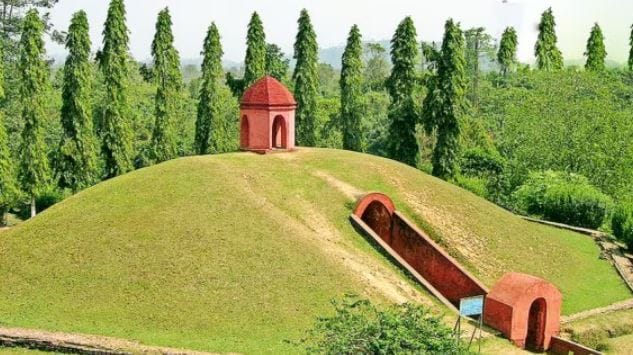700-Year-Old Burial Mounds in Assam Achieve UNESCO World Heritage Status
The Moidams, Assam’s 700-year-old mound-burial system of the Ahom dynasty, have been inscribed on the esteemed UNESCO World Heritage List, marking a historic moment for India’s northeastern region. This prestigious recognition solidifies the Moidams’ significance as a cultural landmark and adds a new jewel to India’s rich heritage tapestry.
Moidams: A Testament to Assam’s Rich Cultural Legacy
These ancient burial mounds, nestled in the foothills of the Patkai Ranges in Assam, serve as the final resting place for the Tai-Ahom royalty. The Moidams, with their unique architectural design and cultural significance, offer a glimpse into the history and traditions of the Ahom dynasty, which ruled Assam for over six centuries.
Preserving Assam’s Unique Heritage for Future Generations
The inscription of the Moidams on the World Heritage List not only acknowledges their outstanding universal value but also ensures their preservation for future generations. This recognition will undoubtedly attract global attention to Assam’s rich cultural heritage and boost tourism in the region.
India’s Growing Footprint on the World Heritage Map
With the addition of the Moidams, India now boasts 43 sites on the UNESCO World Heritage List, reaffirming its position as a custodian of diverse and invaluable cultural treasures. This achievement highlights the nation’s commitment to safeguarding its heritage and promoting cultural exchange on a global scale.
Soumya Smruti Sahoo is a seasoned journalist with extensive experience in both international and Indian news writing. With a sharp analytical mind and a dedication to uncovering the truth, Soumya has built a reputation for delivering in-depth, well-researched articles that provide readers with a clear understanding of complex global and domestic issues. Her work reflects a deep commitment to journalistic integrity, making her a trusted source for accurate and insightful news coverage.



